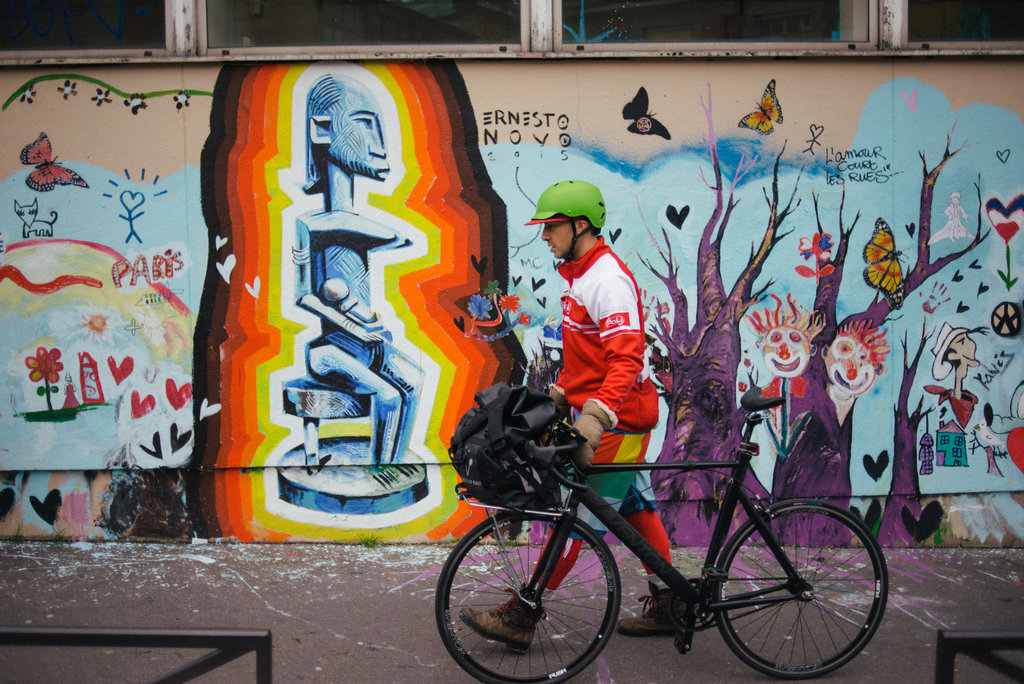During our first visit to Lilly Library where we briefly conducted research using the books on reserve, I came across a segment of one book that focused on city transformation through large-scale mural and painting works. When Edi Rama became the newly appointed mayor of Tirana, Albania, one of his first decisions was to purchase paint and have buildings around the city transformed from their gray dilapidated exteriors into colorful, and newly revitalized neighborhoods. There was one sentence in this segment that particularly stood out to me, and referred to the ‘therapeutic quality of mural work’ in order to repair a downtrodden city.

This same idea of street art and mural work as a form of therapy resurfaced in a New York Times article this week, that provides portraits of the artists behind a community wall that has been painted in Paris’ 10th arrondissement, a block from the restaurants that were targeted during the November 13th attacks. I remember walking along this street during my time in Paris and being captivated by many of the works that children had done in response to the attacks.

The wall is a beautiful example of the therapeutic qualities of socially engaged art – the capacity to grieve and heal together, and to share that process with others so that they too may take part.
To watch a TED talk by the mayor of Tirana: http://www.ted.com/talks/edi_rama_take_back_your_city_with_paint
To read the New York Times article: http://www.nytimes.com/interactive/2016/02/11/arts/design/paris-wall-of-love.html?ref=design

